Are you looking to make a living from blogging? You need a strategy.
Without one, no blog can succeed.
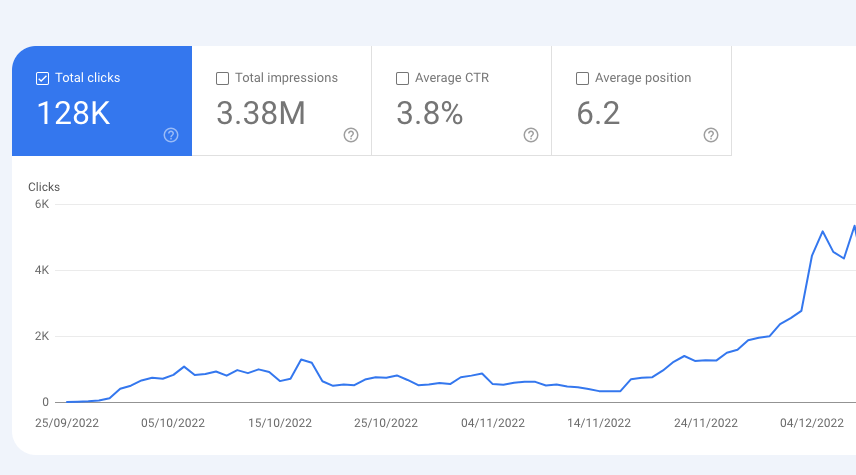
But a strategy doesn’t mean it’s technical or hard. You just need one to level up blogging.
Let me show you exactly how I build profitable blogs and what is my #1 strategy!
1. Define Your Goals
Before formulating a strategy, consider why your blog exists.

If it’s just a hobby, don’t worry about strategies.
But if you have any intentions to make a single dollar from it, then you need to have a strategy.
In a very simplistic scenario, here’s what a successful blogging strategy looks like:
- Choose a niche
- Launch a blog with WordPress
- Write hundreds of niche-specific quality posts
- Monetize after a year or two
- Invest back into your blogging business
Long story short: If you’re serious about blogging, you should be ready to invest a significant amount of time (or money) into it.
2. Choose a Niche
Choosing a niche and sticking with it is crucial.

It’s the most important singular step you can take towards blogging success.
If your blog has multiple niches, there’s no way to find success (unless you have a lot of writers, of course.)
To choose a niche for your blog, you need to strike a balance between something that:
- Is profitable
- You’re passionate about
- Has low competition
And let me be clear, there’s no such niche where you could perfectly check every box.
In reality, you will end up with something that:
- Is decently profitable
- You are at least somewhat interested in
- Has some competition
But that’s fine. As long as it’s something you can make a profit with and don’t burn out by doing, it’s all that matters.
Just be prepared.
To stand out, you need to write usually hundreds of quality blog posts. This can easily take a year or two, depending on your schedule.
When I started my first blog, it took about a year of 50+ hour weeks to start making significant income.
The most recent site I launched with my mate has just 37 visitors in 6 months. Yet there are already 20+ blog posts…
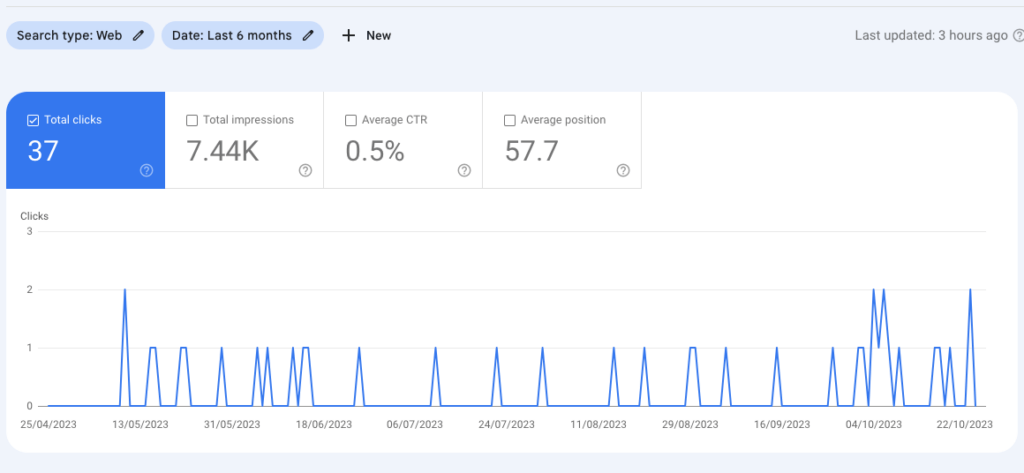
The growth will be slow at first—no matter which niche you choose.
Just be patient and know that it requires a lot of time and effort!
Speaking of choosing a niche, it’s a very broad topic. I recommend checking this guide to learn how to actually do it.
3. Do Search Analysis
Before you write a blog post, make sure to nail the search analysis.
This sounds technical but it’s not. It’s actually simple and based on common sense.
Instead of writing about random topics like the favorite color of your dog, write about topics that solve problems for people in your niche.
But How?
To find my unique strategy for finding blog post topics, read this post.
But to put it short, just use the Google autocompletion feature.
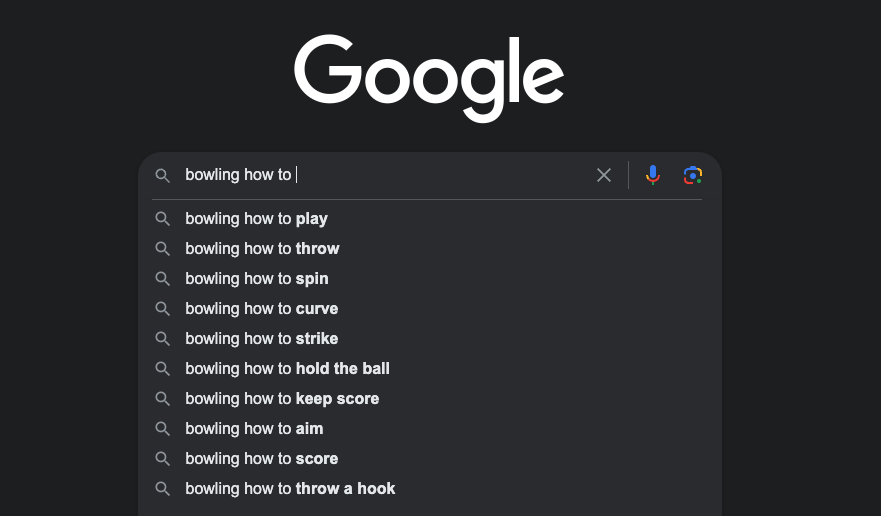
These are topics that people are actually searching for. And it’s all based on Google’s own data.
Those are great blog post topic candidates.
But here’s the thing. Not all are worth spending time on.
There are topics that have too much competition and that are impossible to stand out in.
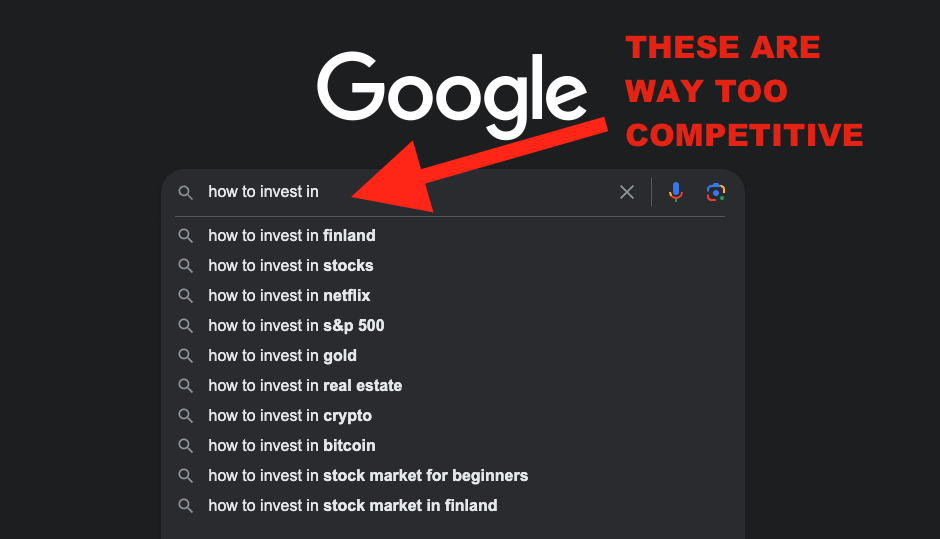
For example, if your blog is about health or finance, you should be an expert.
Not just because it’s ethical but it’s also something that Google requires before ranking your website.
Then, there’s also a ton of competition in those niches as well.
Anyways, your blogging strategy should be one where you can stand out with relative ease.
Focus on blog posts where you can write the best post about that topic on the entire internet with the least effort.
To rank on Google every post needs to be the best resource on the internet.
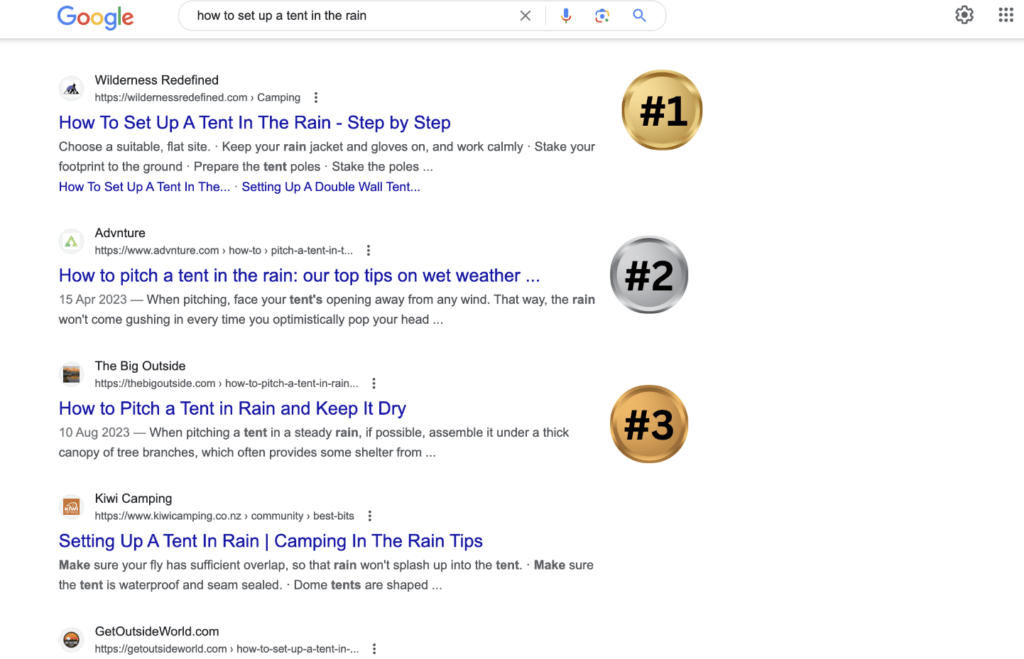
How to Be the Best?
Writing the best post is simpler than you might think.
Just dig deeper into your niche and spend more time than your competitors have.
If there are 1,000-2,000 word blog posts in the top 10 search results, write a post that’s 4,000 words.
But don’t get stuck at writing one post.
How Long Should You Spend Writing a Blog Post?
It doesn’t really make a difference whether you write 4 hours or 40 hours.
The quality and information are already there quicker than you’d think.
Also, Google does not only want you to write one or ten good posts. You need to write all of them.
The better you’ve covered every single topic in your niche, the more Google trusts you (topical authority).
Usually, this means hundreds of posts.
For example, one of my niche sites has 400 posts.
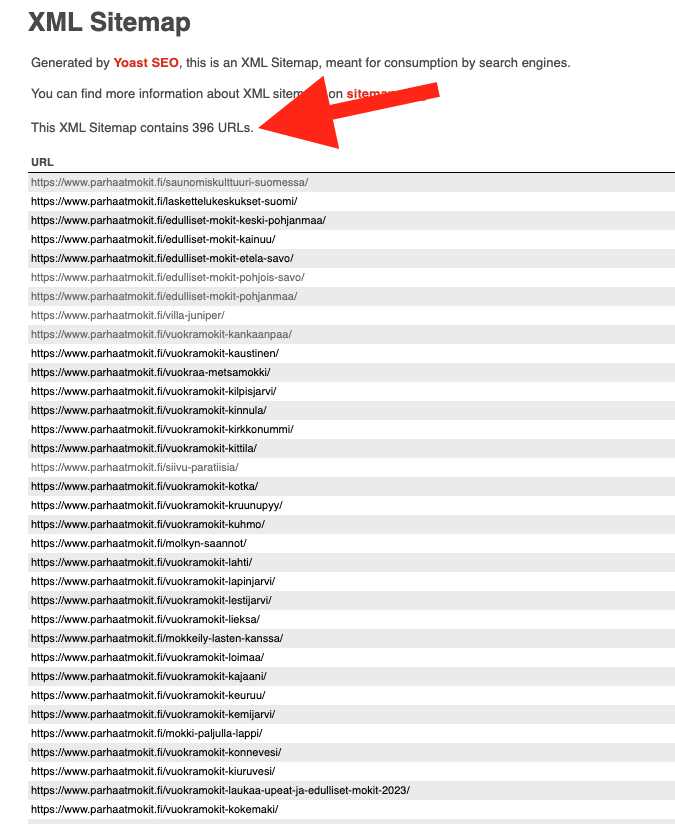
And only recently Google started ranking the site high.
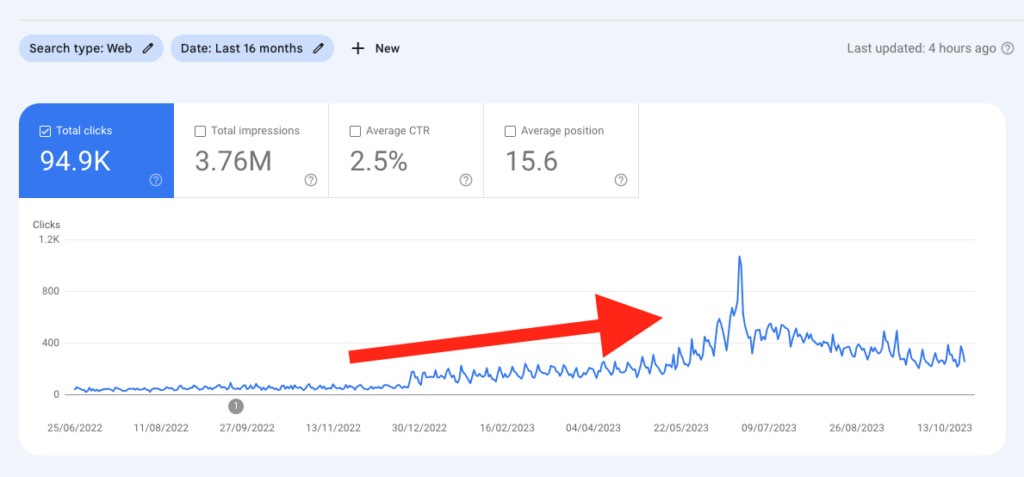
This is why I recommend publishing one post per day.
This way you can find Google’s trust and high rankings in a relatively short amount of time (6-12 months of full-time work).
Write a lot, and always be the best. This way your competitors won’t catch you up and you can stand out.
4. Do Competition Analysis
Research your competitors to see what topics are performing well in your niche.
Just open up Google and find blogs similar to you or what you could be in the near future.
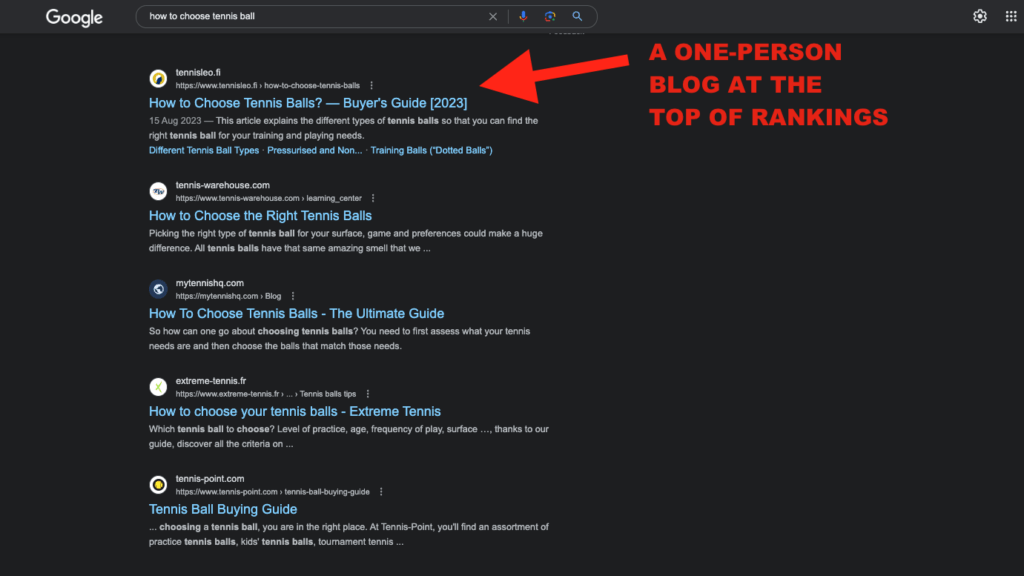
In other words, find small blogs and websites with a relatively small number of posts.
Look at the topics they’re ranking for.
You can do this by opening up their blog posts and doing searches related to the topics.
Of course, you can check your competitor’s sitemaps as well. Just head over to your-competitors-url.com/sitemap.xml.
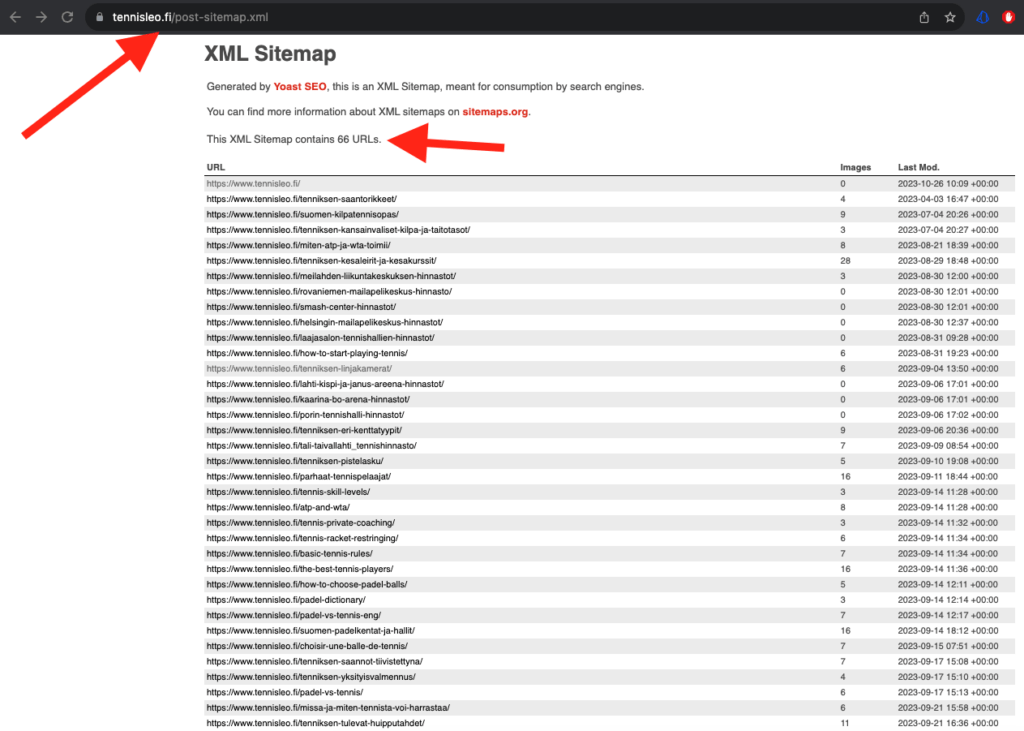
If your competitor’s blogs appear high on Google, that’s a good sign.
It means you might be able to rank for those topics as well.
But if there are only large news sites or popular authority sites at the top, there’s probably no chance for you to rank for that particular topic.
Go For Long-Tail Searches
To find low-competition blog post topics to rank for, go for “long-tail” search queries.
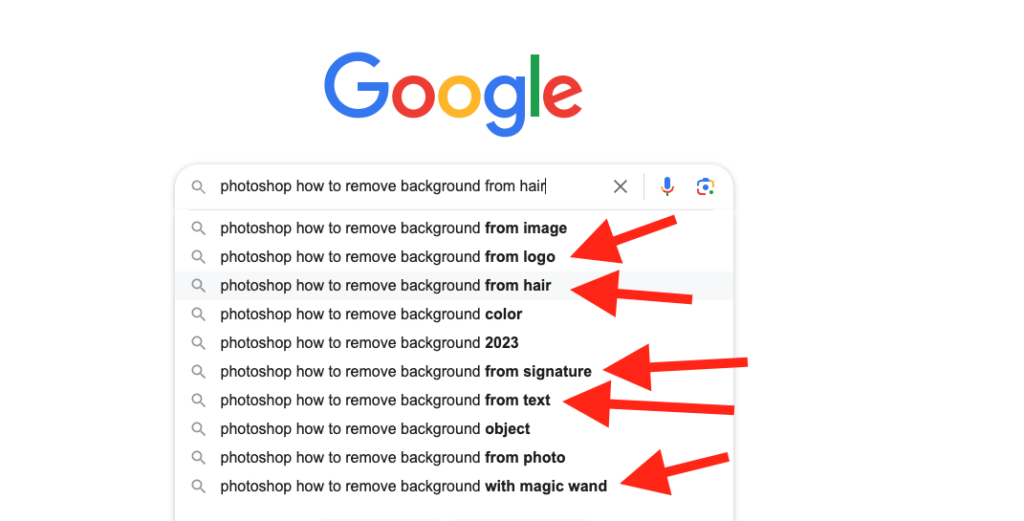
In other words, target very specific and long search terms.
For example:
- A competitive short-tail topic: “Tennis shoes”
- A less-competitive long-tail topic: “How to change the grip of a tennis racket”
The more specific the topic, the less competition there is. Of course, there are also fewer people searching for that topic as well.
But in almost every niche, it’s much easier to rank for something specific.
Write All the Posts, Though
Don’t get confused here.
Any post that’s relevant to your audience is worth writing about.
But the effort to put in those posts is what makes the difference here.
If there’s a topic that is impossible to compete in, just write a short post to give your two cents.
But if there’s a topic you clearly have a chance to shine, make it the absolutely best piece of content on the internet.
I’ve written short ~1,500-word definition posts about competitive topics that have been covered millions of times on the internet.
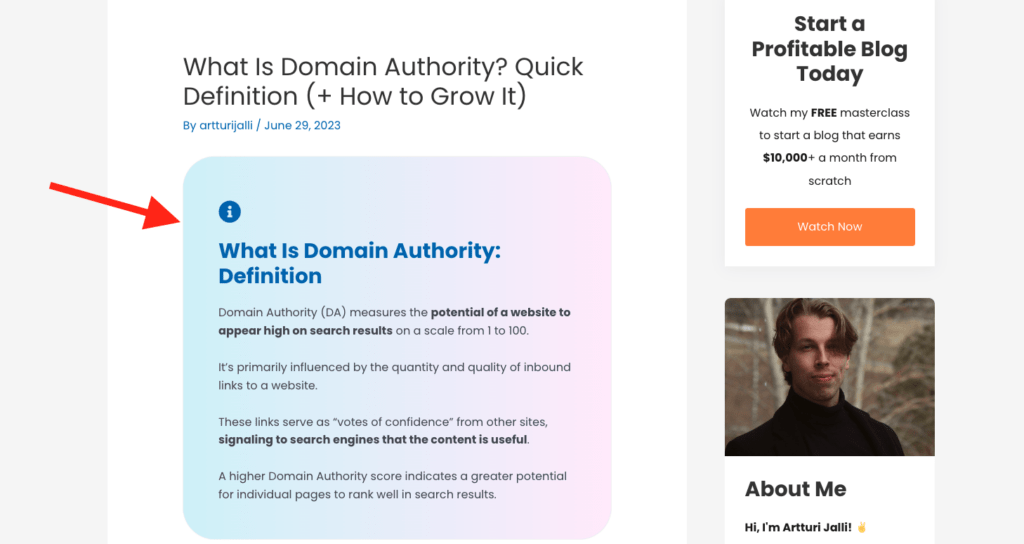
These are something I need to cover because they’re essential to my niche. But because there’s not really a chance to provide something truly unique to the table, I like to keep them short.
But then I also have those super long 5,000-word posts about topics that are covered poorly or where I can truly shine.
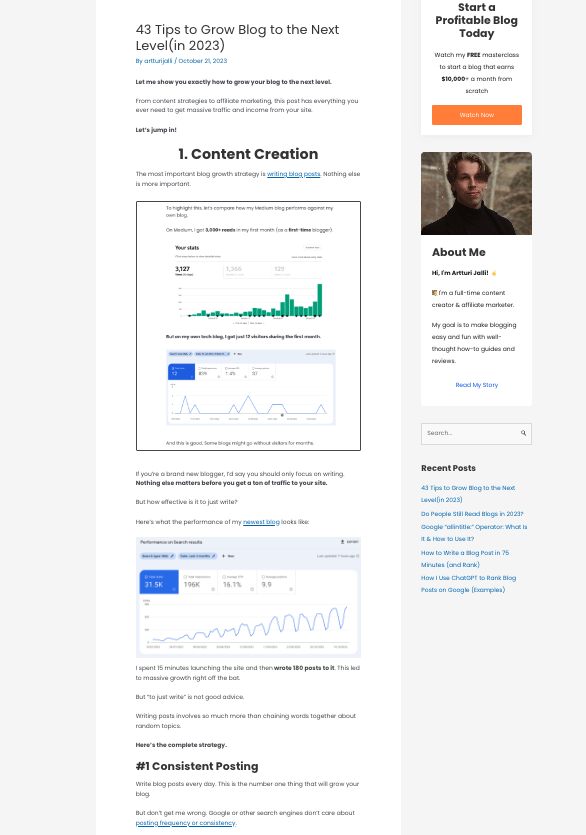
Write all of the posts. But only spend time on topics where you have a chance to rank.
Make sure to check my video about keyword research if what I just said feels a bit hazy:
5. Forget about SEO
Forget about “SEO strategies”. Those are no longer a thing.
If you built your website with WordPress or Wix, for example, all the technical SEO stuff is already taken care of on your behalf.
If you start making a significant income from your blog, you can run some technical audits in the future just in case.
Someone with technical knowledge can ensure your images are optimized, your site is loading fast and belongs to a top-tier CDN.
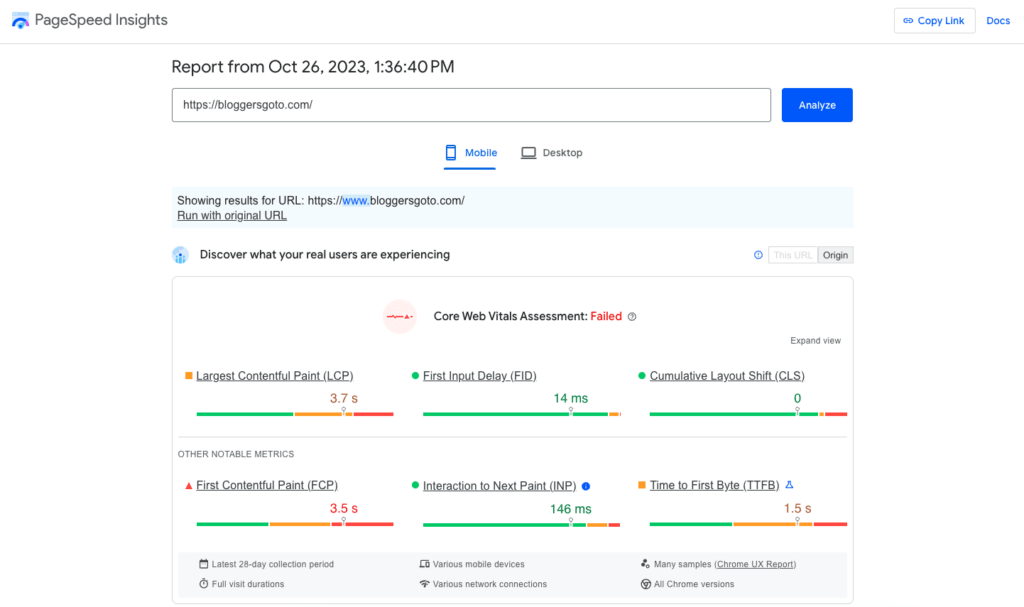
But before you can afford it, don’t worry about that stuff.
It’s just enough that your site passes the “eye test”. In other words, just use common sense.
Does the page load about as fast as other sites?
Does it look good on mobile and desktop?
If those are good, there’s nothing you can do right now—except for writing a ton of content all the time.
💡 A part of a successful blogging strategy is ignoring the noise. Just write a ton of niche-specific quality content and you’re good!
If you hear someone talk about keyword placements, backlinks, or guest posting, that’s 100% useless these days.
Just write for humans and that’s it. Don’t chase the algorithms.
Anything that doesn’t add direct value to your readers is useless.
6. Write Best Posts Only
Write engaging, informative, and well-researched content.
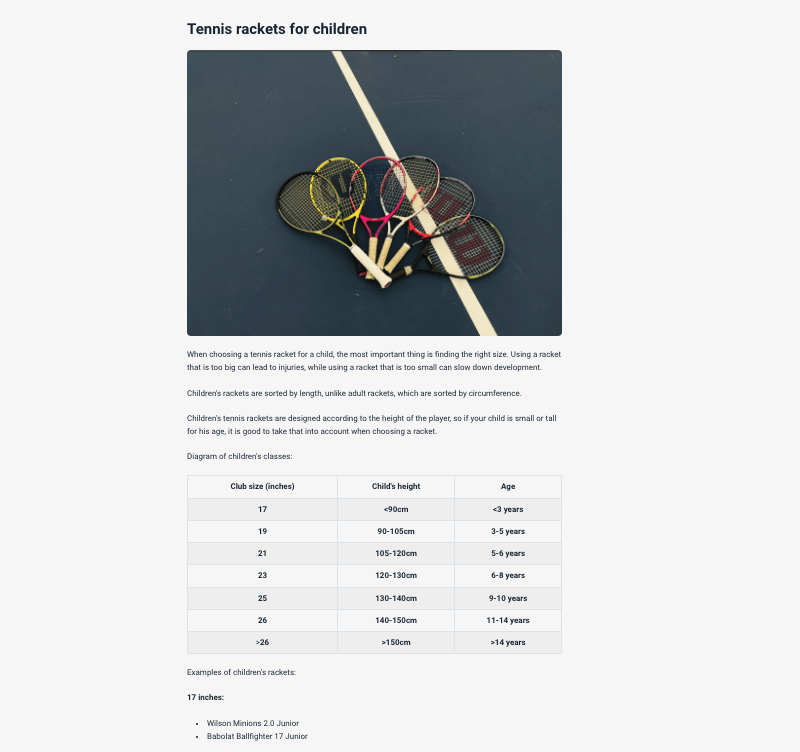
Treat every blog post like a business.
Make sure each post is the best post about that topic on the internet.
Remember, Google won’t rank a page that’s not the best resource.
Structuring the Post
Don’t write just a huge blob of text. That’s never going to work anymore.
Nobody has the patience to read posts that look like Wikipedia pages.
Instead, people want to read visual and highly engaging content.
To stand out, make sure to format your posts with:
- Headings
- Subheadings
- Tables
- Bulleted lists
- Numbered lists
- Images
- Infographics
- Featured images
- Embedded videos
And such.
It’s all about breaking the text down nicely and adding those visual elements.
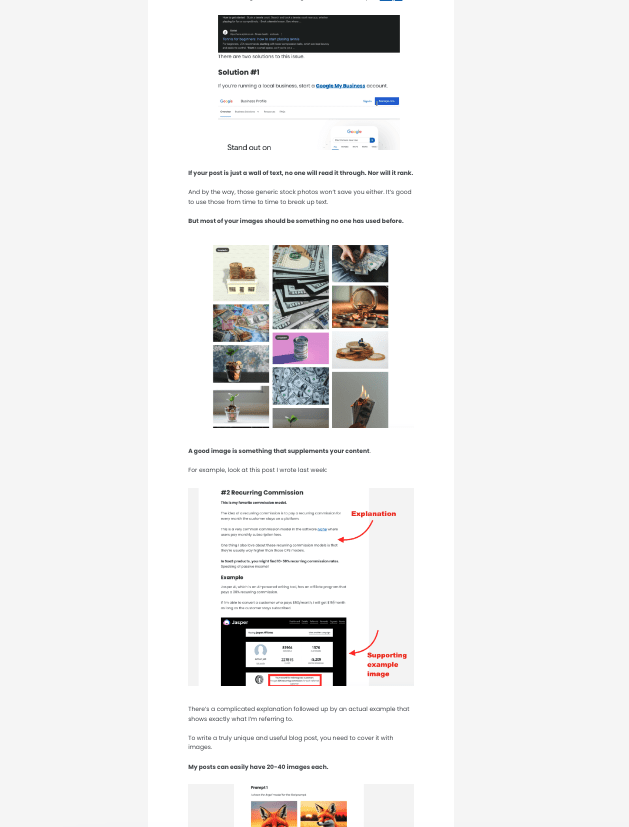
Use Simple Language
Don’t forget to use a clear and concise writing style either.
Avoid complex language.
It’s enough to write a casual post to a fellow reader rather than a formal piece of documentation.
Consider how hard it would be to read a blog post like this:
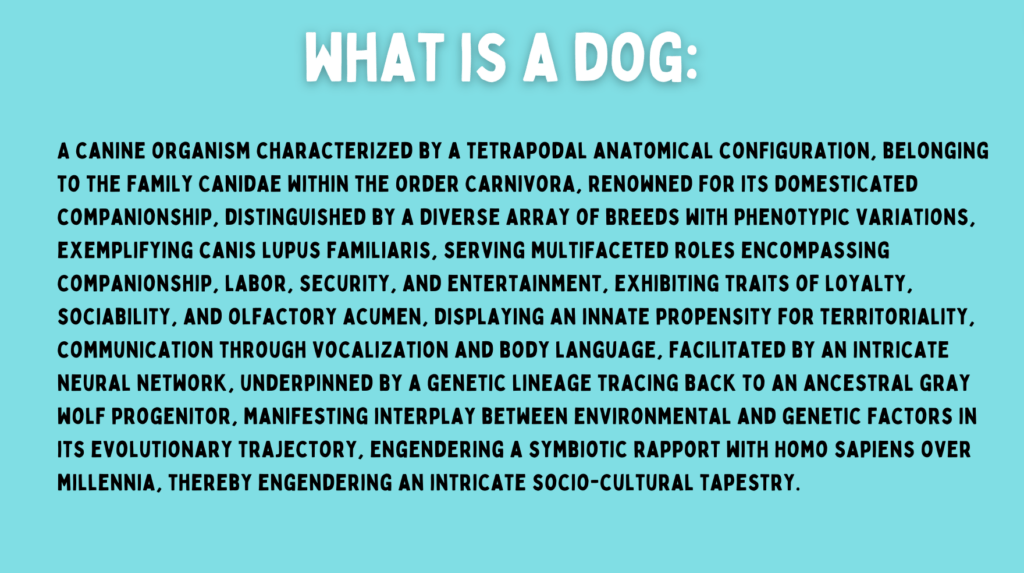
Now, here’s the same excerpt with much easier language.

If you’re in a hurry, which style would you prefer?
I’d bet you’d go with the latter one. That’s the way to go in your blogs as well.
Mind the Mobile
Make sure every post looks nice on a mobile device.
Look how nice this looks on a narrow screen width:
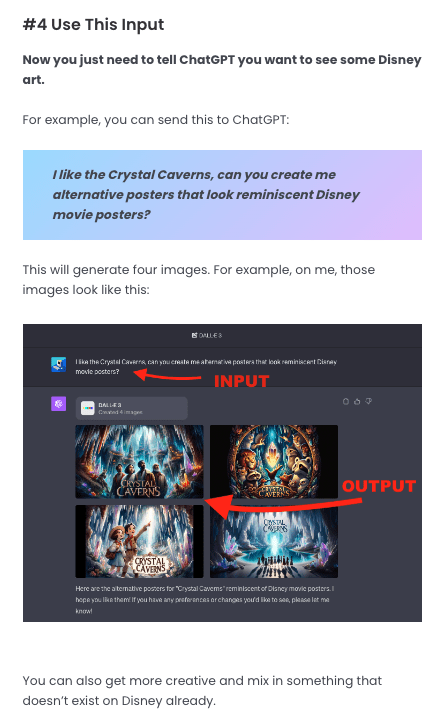
Then compare it to something like this:

So, write a post that has short chapters and sentences.
This makes the post look nice on a narrow screen size.
Nothing is more frustrating than a wall of text. Avoid that at all costs.
Read also: How to Structure a Blog Post
7. Write Visual Content Only
Obsess over visual content.
Add truly unique and supplementing images everywhere.
Look how authentic this review blog post looks like with images that are clearly taken by myself.
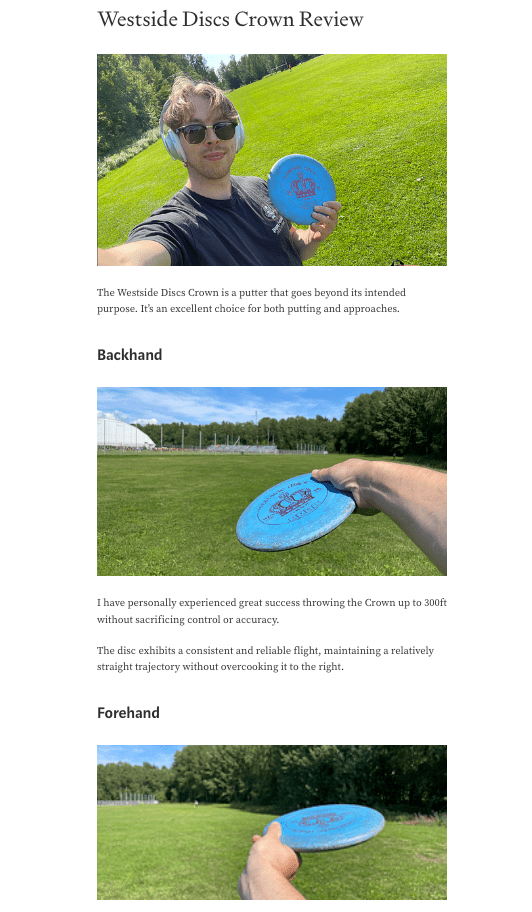
And yes, this is a lot of extra work.
I usually spend at least 1-3 hours adding images, visualizations, and illustrations to my blog posts.
Look at this image that I created for my blog post about the electricity consumption of a bathtub:

Ok, I’ve got to admit that I created this with AI…
But still, this is the way to stand out.
People are becoming more and more dependent on highly visual content. Nobody will read a blog post without images anymore.
I’ve heard that a good post has one image per 150 words.
But I think that’s sparse.
If it’s possible to illustrate/support content with an image, I’d add as many as I can.
For example, I just wrote a post with 70 images and about 5,500 words.
And by the way, don’t use those stock images from Unsplash or Pexels. Google notices that those aren’t unique.

Reusing stock footage is usually not a good idea—except for breaking the text up nicely.
But those rarely add any value.
To rank on Google, your content always needs to “add to the web”.
If your images already exist, you aren’t necessarily adding anything new into the mix.
The way to go is to take those images yourself.
The good news? You don’t need any photography background to take good images for your blog posts.
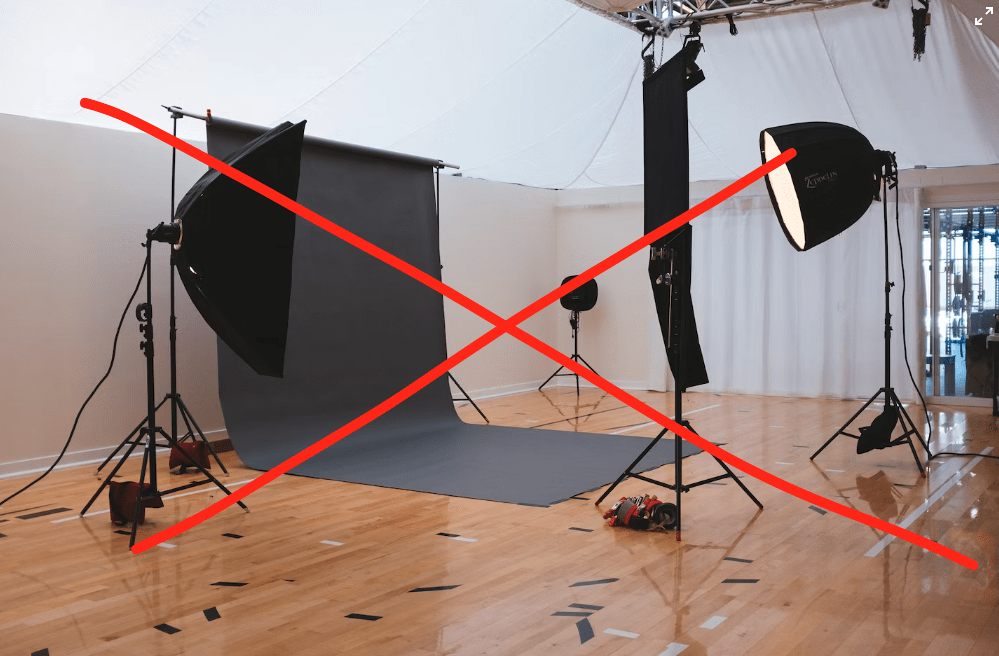
It’s enough just to use your mobile device’s camera out there.
The quality is more than there already. No need to be an expert photographer or hire one!
Furthermore, in many niches, the content is more relatable with images that don’t look “too professional”.
Look at this disc golf review post that I created:
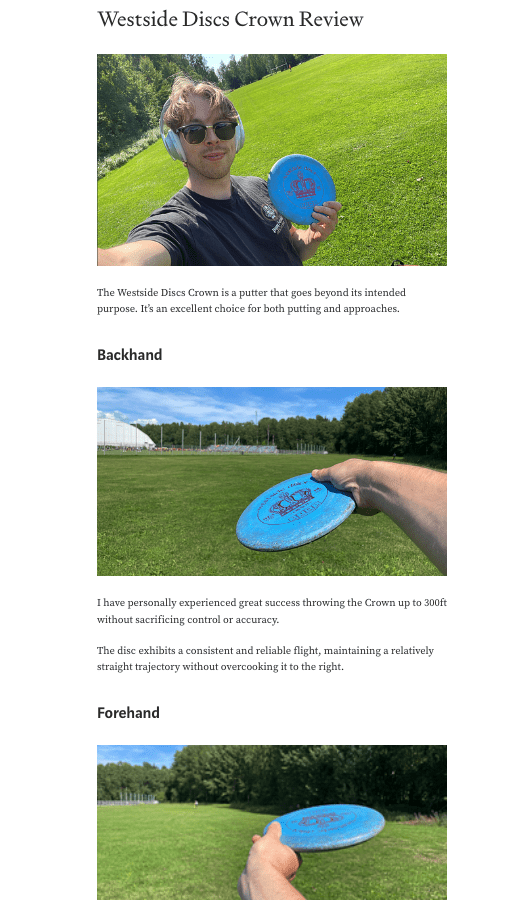
Looks professional?
Heck, no!
Looks authentic and show that I’ve actually used the product?
Absolutely!
For instance, with product reviews, it’s crucial to show the audience first-hand experience.
The image quality, your hair day, and other such aspects aren’t in a make-or-break role in the post’s success.
8. Promote Subtly
Share your blog posts on social media platforms if you want to.
This is not necessary, though. But it can bring some extra visitors especially at first.
If you do social media, you still need to be strategic—not promotional.
Don’t just share social posts that say “Hey check out this awesome blog post!”.

I mean who would click that anymore?
The internet is full of people who want to take shortcuts and post for their own good.
Instead, share something useful. Something that’s truly valuable in and of itself without even considering the post or promotion.
On forums, this could for example mean a thorough answer to a question. Then slip in your post at the end of the guide.
This looks much better:

9. Engage
Respond to comments on your blog and social media.
I think Ryan Robinson is an excellent example of this:
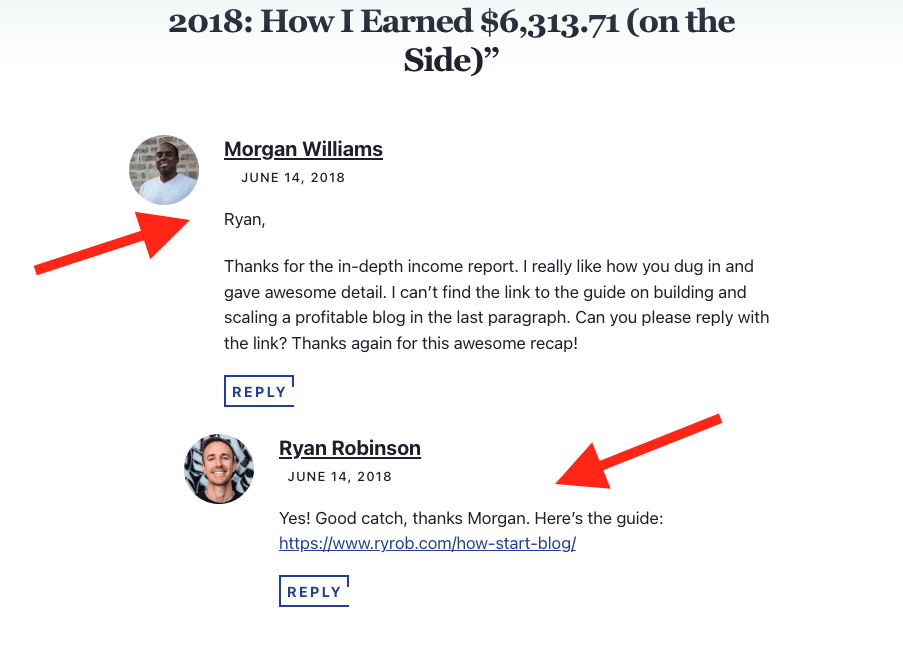
He answers basically all the thousands of comments he gets.
However, I must mention that I’m not a huge fan of having blog comments enabled.
This is because there’s simply too much spam. The bots always get the upper hand with spam detection.
Even those legitimate-looking comments are usually AI-written comments and the author has hidden a link or a CTA somewhere.
Not good!
But if you manage to find a solution that keeps the bots at bay, then make sure to be active.
Don’t just receive comments but actually respond to those as well. This way you build rapport around you and your blog.
10. Collect an Email List
Email lists are still a thing.
As a matter of fact, those are the only ways to have a reliable communication channel with your audience.
But why should you care?
People no longer visit blogs for the sake of entertainment. People read blogs to find information.

These days, blog visitors come from search results. In other words, most people just come and go.
This is what the process typically looks like:
- Google up something
- Open a random post
- Find the answer
- Exit to never return
But this is not ideal for you as a blogger who wants to retain the audience.
You want to have a strong brand and a loyal following.
One of the best ways to do this is by having a newsletter.
(Yes, it still works. 🙂)
The way to capture readers is by offering something for free.
For example, if your blog is about software development, you can offer your subscribers a free “job-ready developer checklist” in exchange for an email.
I offer a free blogging course as a freebie.
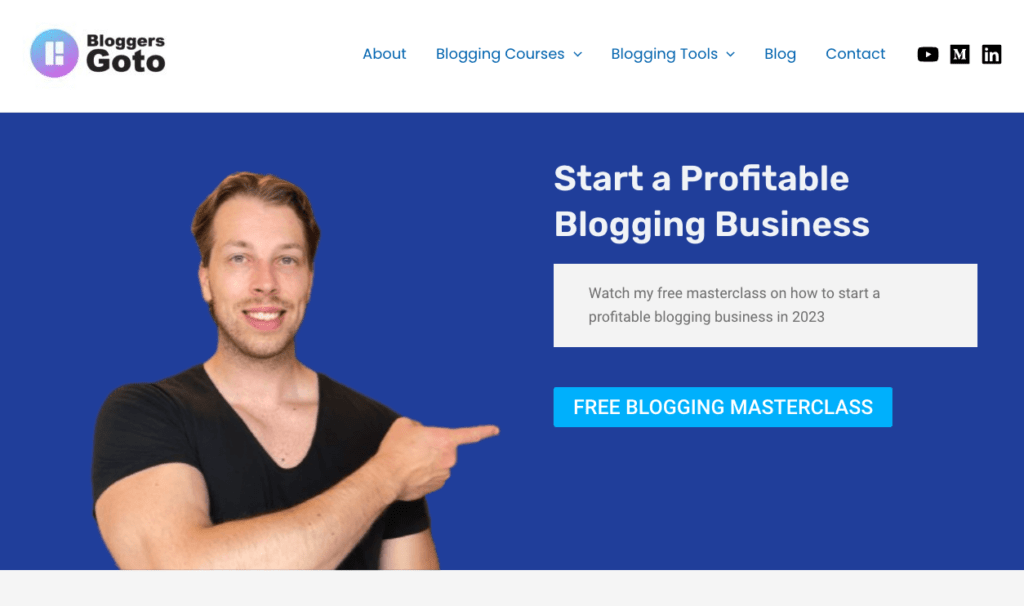
By offering a freebie in exchange for an email, you’ll start accumulating emails from your visitors.
This gives you a way to own your audience.
If Google went down or if your site got hacked, you’d still have access to the most engaged contingent of your audience.
But how about sending those emails then?
Keep it simple but valuable.
Send short, concise, and useful emails that are not promotional.
Those emails can be very short and have a link to your newest blog post, for example.
For example, consider something like this:
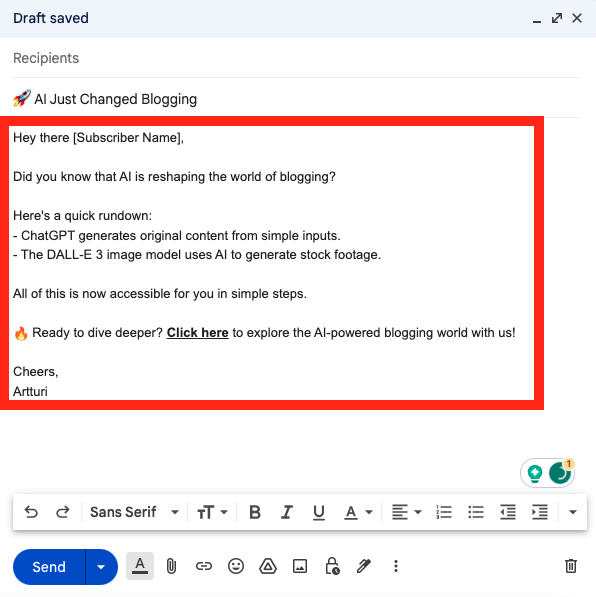
This is something one can read in 10 seconds and know what’s going on.
Then, if they’re interested, they have an option to find even more information by reading a post assigned to the email.
11. Monetize
Don’t go money first.
But don’t forget about money either.
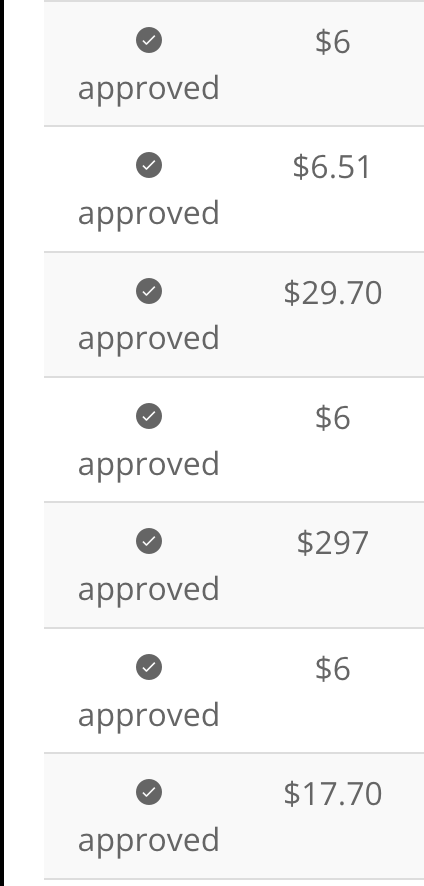
Choose your niche and topics so that they are monetizable.
Something like coding tutorials or chess tutorials are poorly monetizable. You might only make $5 per 1,000 visitors with ads.
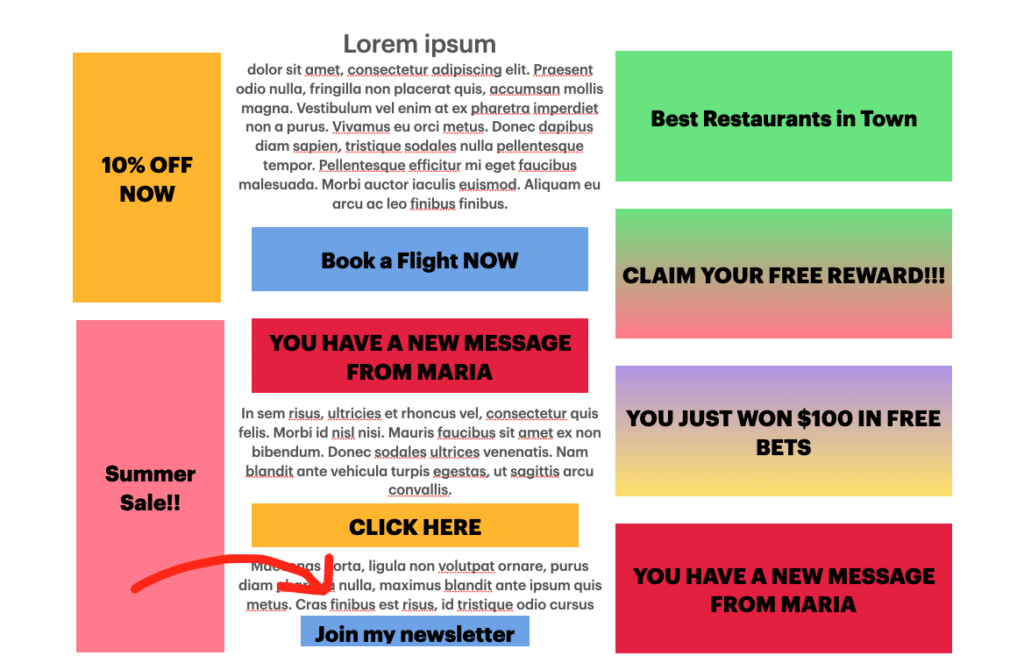
On the other hand, a niche like credit cards or trading can bring in $100 per single visitor.
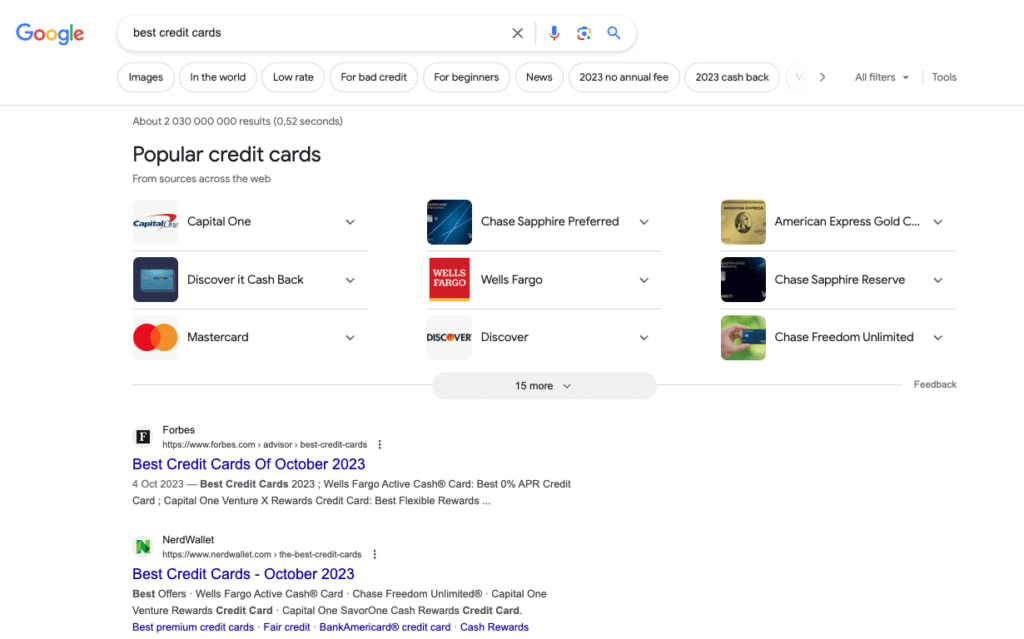
But credit cards (or any other similar niche) are flooded with competition.
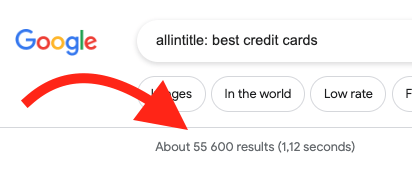
But then, coding-related stuff is usually way easier to stand out.
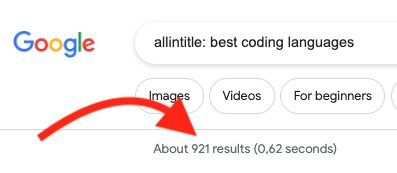
Make sure to choose a niche where you can find good affiliate deals.
Also, write blog posts about topics where you can promote useful products to your audience.
These could be reviews or roundups.
Be strategic with the monetization.
Don’t assume that every niche has money to be made.
Also, don’t promote affiliate products in any post. Instead, write those carefully crafted affiliate posts.
If you place affiliate links in a random post, nobody is going to buy anything from you!
Read also: How to Monetize a Blog
12. Update Old Posts
No blog post that you publish is going to end the project there.
Instead, update your content regularly.
In some niches, this might mean monthly updates.
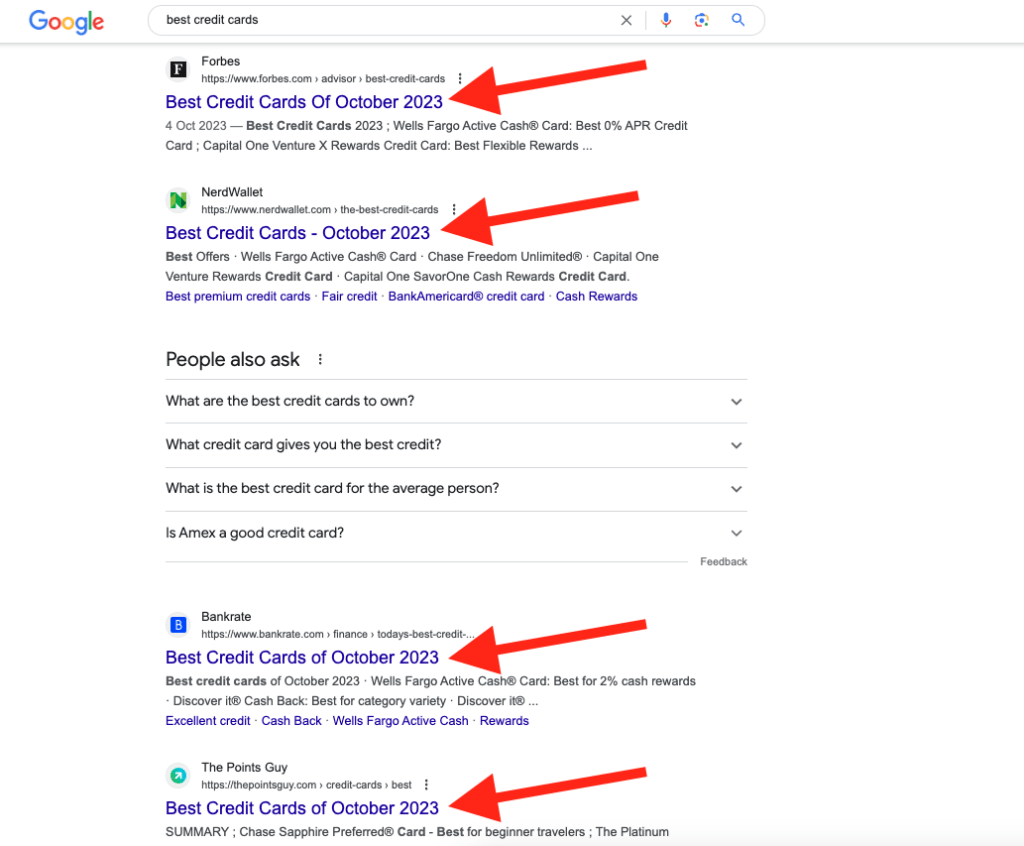
But in other niches/contexts, you might not need to touch your posts for years.
Think about something like the Pythagorean theorem.
This is something that will never change, so there’s no need to worry about getting outdated.
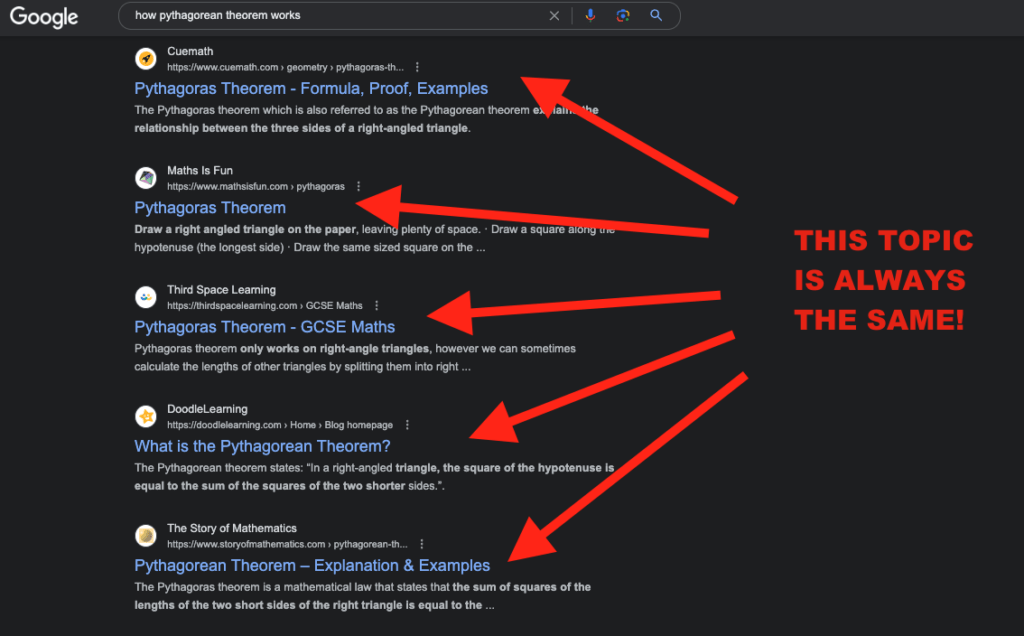
Anyways, here are three main reasons to update blog posts—even those where the information doesn’t change.
- Staying up-to-date
- Adding relevant resources
- Giving visual uplift
If your content is something that needs to be updated quickly, you want to make sure to keep it up to date.
For example, consider a blog post about “Best AI Chatbots”.
A post that’s written in 2022 would no longer be accurate in 2023 because of all the massive changes in the industry.
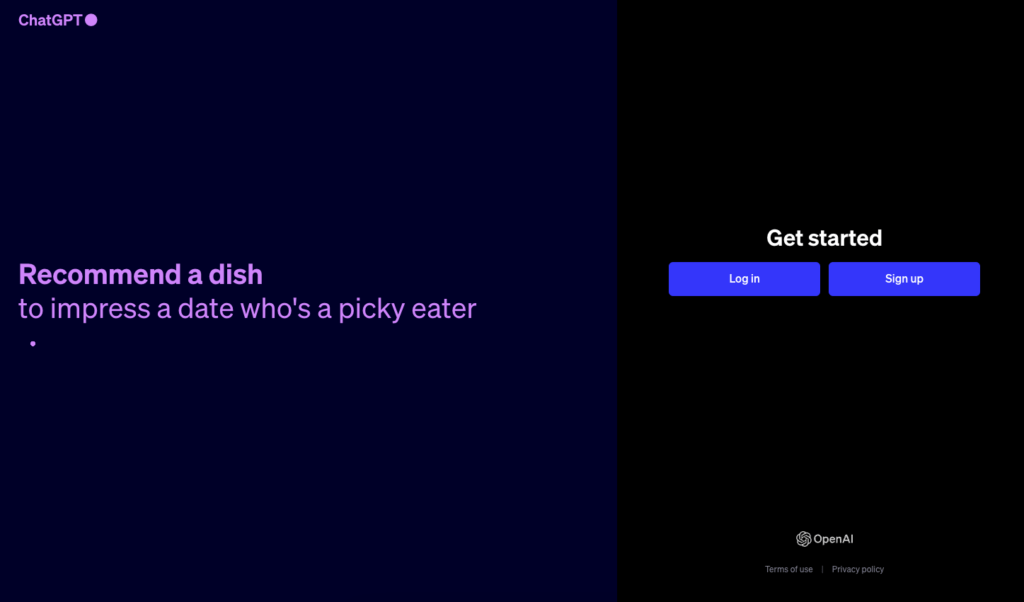
To compete with your post, you’d need to update that at least a couple of times a year.
13. Build a Moat Around Your Blog
Make your blog posts irreplaceable and very hard to replicate.

Write so awesome posts that your competitors feel overwhelmed when trying to compete.
If it just takes 15-30 minutes to replicate your post, it’s not going to stand the test of competition.
Treat every post like a small business. This is the only way to succeed.
If you use AI or cheap freelancers to write, anybody can do that. This makes it very hard to stand out and build long-term success.
Wrap Up
A good blogging strategy is to write a ton of quality content about a particular niche. Be the best and most reliable resource in that entire space.
Don’t try to use growth hacks or shortcuts to success.
The harder you make it for someone to compete with your content, the better the results.
Make sure to watch my video about how to start a blog:
Thanks for reading. Stay tuned!
